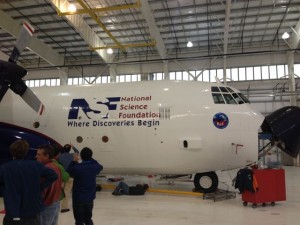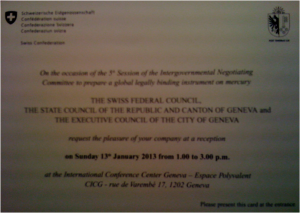by Julie van der Hoop
Worldwide, fish consumption is the main source of human exposure to methylmercury, a highly toxic form of mercury that biomagnifies up the food chain [1]. Accordingly, a fair amount of media attention has focused on mercury content in fish as a potential public health threat [2]. In an effort to protect consumers, US state and federal agencies have set guidelines for limiting consumption of fish that tend to be high in levels of methymercury (these guidelines are particularly important for pregnant women and women of childbearing age, as fetal exposure to methylmercury can create long-term developmental impacts). Additionally, health advisories are available online to help consumers avoid consuming types of fish that are particularly high in mercury and other toxins.
In light of these health concerns, it is no surprise that one of the aims of a global mercury treaty is to, through reducing mercury emissions, ultimately reduce the levels of toxic methylmercury in fish and shellfish.
Should we eat fish?
Fish are often touted for their great nutritional profile: they’re low in fat, with high-quality protein and an added dose of vitamins. The American Heart Association recommends at least two 3-ounce servings of fish per week to obtain beneficial omega-3 fatty acids. However, balancing the risks of mercury consumption and the benefits of fatty acids can be difficult for both consumers and those faced with the task of setting advisories.
Some studies are now urging consumers to weigh the risks and benefits of eating certain types of fish. In terms of what to avoid, shark and swordfish shouldn’t make it to your plate, not even for a single meal per month. The health benefits of fishes such as tilapia, pollack, flounder, shrimp, trout, herring, salmon, canned light tuna, and cod generally outweigh their potential mercury concentration cons [3]. That being said, other contaminants (e.g., persistent organochlorines in farmed salmon) and fishery sustainability (e.g., depletion of many cod stocks) are additional concerns worth considering when planning your meals.
Will fish mercury levels ever decrease?
It’s uncertain when—and whether—you’ll be able to enjoy all-you-can-eat sushi without thinking about how much mercury you’re consuming. However, recent research is helping us better understand how changes in mercury emissions could affect the future methylmercury content in fish.
In a new study, researchers added mercury to an experimental lake to learn how quickly it was incorporated into fish and to track what happened when mercury-addition stopped. Good news: concentrations of methylmercury in lake fish decreased much faster than previously thought. As reported by Susan Bence this week, researchers working on the project believe that reductions in mercury emissions could lead to a fairly rapid decrease in fish mercury levels in certain ecosystems. How fast these levels will decrease, however, will vary depending on where the fish are caught.
Still, mercury cycles through the environment very slowly, and even if we can restrict future emissions to current level, this will not reduce the global mercury burden. A major cut in mercury emissions is needed to reduce methylmercury concentrations in marine fish: as a recent report by Chen et al. shows, cutting mercury emissions by about 40% could lead to a 16% decline in mercury concentrations in fish in the North Atlantic Ocean.
What should you do in the meantime?
To help guide you in your fish dining decisions, check out the EPA’s online guidelines for eating and selecting fish and shellfish, as well as the consumer guides and apps available from groups such as NRDC and the Sierra Club. Still, what might matter most in is not the species of fish, but where it was caught [4]. Informing ourselves as consumers is increasingly important – whether it be for concerns over sustainability or mercury consumption.



